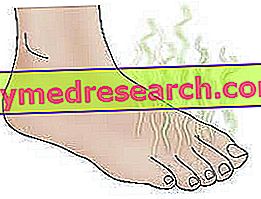Definition
Placenta accreta is a defect of placental adhesion to the uterine wall.
Specifically, the placental membrane is in close contact with the uterus as the trophoblastic invasion extends beyond the normal limit (called the Nitabuch fibrinoid layer). In the placenta accreta, therefore, the chorionic villi are not contained in the decidual uterine cells, as is generally the case, but extend more deeply reaching the myometrium (muscular layer of the uterus).

The disorder does not compromise pregnancy, as the placental function is normal, but predisposes to massive post-partum hemorrhage, as the membrane detaches from the uterine cavity with difficulty or only partially.
The main risk factor for placenta accreta is a previous uterine surgery (including a previous caesarean section). Other elements that can favor the appearance of the condition include submucosal fibroids, endometrial lesions (eg Asherman's syndrome), multiparity, recurrent abortions, cigarette smoking habits and maternal age over 35 years. Furthermore, the condition occurs more commonly in women who have had a previous placenta after a caesarean section in a previous pregnancy.
Most common symptoms and signs *
- Small child for gestational age
- Premature release of the placenta
- Pelvic pain
- Postpartum hemorrhage
- Vaginal hemorrhage in the early stages of pregnancy
- Vaginal bleeding
Further indications
After childbirth, women with placenta accreta generally have abundant vaginal bleeding, during manual placental replacement, although scrupulously performed.
Early diagnosis is very important, as it allows planning the most appropriate intervention strategies for the case. In women at risk, evaluation of the utero-placental interface is performed by ultrasound (transvaginal or transabdominal); this survey can be performed periodically, starting from the 20th to the 24th week of gestation. If the ultrasound is not conclusive, MRI or Doppler flowmetry can support the diagnosis.
After the birth, however, the alteration can be suspected if the expulsion of the placenta does not occur within 30 minutes from the birth of the child; if a separation plan has not been created with attempts at manual seconding or if the traction of the membrane causes a massive hemorrhage.
The placenta accreta usually involves the scheduling of a cesarean section, which can be followed by a hysterectomy (indicated in the presence of a conspicuous haemorrhage in progress) or conservative treatment (possible if postpartum bleeding is minimal and the patient wishes to preserve the own fertility). Immediate cord clamping after delivery can help minimize blood loss.



